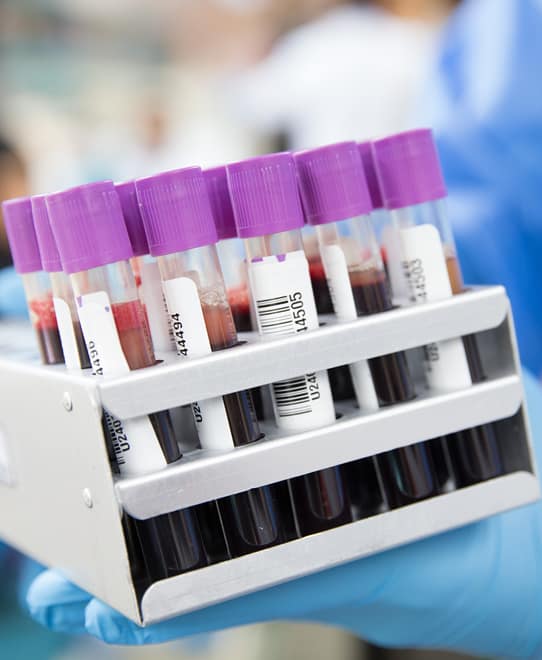Ovarian cancer is the 8th most common cancer in women with 324,000 new cases diagnosed globally each year and 930,000 women living with this cancer.
Even in developed nations, such as the United States, ovarian cancer is often diagnosed at a late stage when the cancer has metastasised. For the 55% of patients presenting with late-stage disease the average five-year survival rate is just 31%.
Earlier diagnosis of ovarian cancer is needed to improve patient prognosis and survival. ANGLE plans to develop an assay for the triage of women presenting with a pelvic mass. In combination with the current standard of care this will help clinicians better establish which women are at the highest risk of malignancy.
Key statistics
8th
most common cancer in women
324,000
new cases diagnosed globally in 2022
930,000
women living with ovarian cancer in 2022
31%
five-year survival rate for late-stage diagnosis*
55%
patients present with late-stage disease*
To date ANGLE has completed three ovarian clinical studies in 600 participants with uniformly positive results.
EMBER2 – pelvic mass study
Following the successful completion of the pelvic mass study for the detection of ovarian cancer reported in 2022, ANGLE has continued the enrolment of women with a pelvic mass into the EMBER2 clinical study. Study recruitment was completed in September 2023 after reaching 400 patients with 1,400 blood tubes processed on the Parsortix system. The cell harvest has been stored for future molecular analysis.

The next generation ANGLE pelvic mass triage test has the ability to out-perform current clinical practice in accurately discriminating malignant from benign pelvic masses prior to biopsy or surgery. The improved accuracy of the test results in a high level of sensitivity as well as a substantial reduction in false positives.”
Dr Richard Moore
Director of the Gynecologic Oncology Division, University of Rochester Medical Center Wilmot Cancer Institute, United States
The clinical results demonstrate ANGLE’s capability to undertake complex molecular analysis of CTCs harvested using Parsortix technology.
In addition to ANGLE sponsored studies the results of a translational study by the Medical University of Vienna, Austria was published in 2024. The translational study, which the research team believes is the largest study of CTCs in ovarian cancer (in terms of number of patient samples analysed), analysed a total of 474 blood samples collected from 123 platinum-resistant ovarian cancer patients at baseline and at multiple timepoints over a period of two and a half years during treatment until disease progression. A panel of 27 gene transcripts (RNA) was analysed on Parsortix-harvested CTCs using standard laboratory qPCR analysis.
Trinity College, Dublin have published a study where the Parsortix technology was utilised to isolate CTCs from the blood of high-grade serous ovarian cancer patients to investigate the role of Plasminogen activator inhibitor 1 (PAI-1) in CTC survival and proliferation.
Research from the Edith Cowen University in Western Australia also demonstrated that the Parsortix system was able to enrich both single CTCs and CTC clusters from high grade serous ovarian cancer patient blood samples. Furthermore, the team demonstrated that CTCs from ovarian cancer patients express PD-L1 and that CTCs undergoing EMT were significantly associated with PD-L1 expression.
Resources related to ovarian cancer

Posters
January 2025
DDRi Summit 2025: Monitoring of DNA Damage Response Biomarkers using Circulating Tumour Cells captured with ANGLE’s Parsortix® instrument from Ovarian, Prostate, and Breast cancer patients
ANGLE Europe Limited, Guildford, UK, published at the 8th Annual DDR Inhibitors Summit 2025
*Based on US data
For Research Use Only. Not For Use in Diagnostic Procedures.
